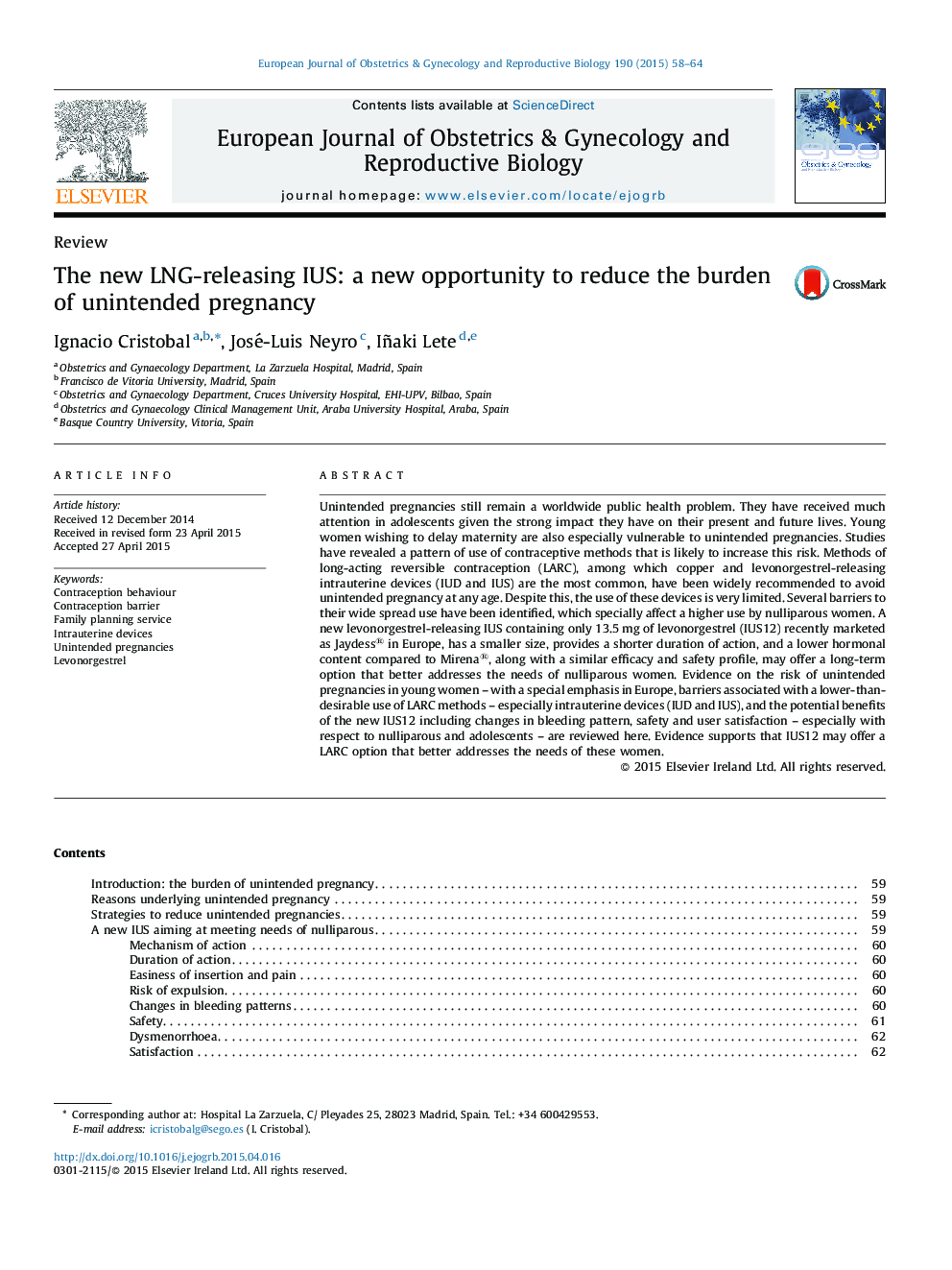| Article ID | Journal | Published Year | Pages | File Type |
|---|---|---|---|---|
| 6173176 | European Journal of Obstetrics & Gynecology and Reproductive Biology | 2015 | 7 Pages |
Unintended pregnancies still remain a worldwide public health problem. They have received much attention in adolescents given the strong impact they have on their present and future lives. Young women wishing to delay maternity are also especially vulnerable to unintended pregnancies. Studies have revealed a pattern of use of contraceptive methods that is likely to increase this risk. Methods of long-acting reversible contraception (LARC), among which copper and levonorgestrel-releasing intrauterine devices (IUD and IUS) are the most common, have been widely recommended to avoid unintended pregnancy at any age. Despite this, the use of these devices is very limited. Several barriers to their wide spread use have been identified, which specially affect a higher use by nulliparous women. A new levonorgestrel-releasing IUS containing only 13.5Â mg of levonorgestrel (IUS12) recently marketed as Jaydess® in Europe, has a smaller size, provides a shorter duration of action, and a lower hormonal content compared to Mirena®, along with a similar efficacy and safety profile, may offer a long-term option that better addresses the needs of nulliparous women. Evidence on the risk of unintended pregnancies in young women - with a special emphasis in Europe, barriers associated with a lower-than-desirable use of LARC methods - especially intrauterine devices (IUD and IUS), and the potential benefits of the new IUS12 including changes in bleeding pattern, safety and user satisfaction - especially with respect to nulliparous and adolescents - are reviewed here. Evidence supports that IUS12 may offer a LARC option that better addresses the needs of these women.
